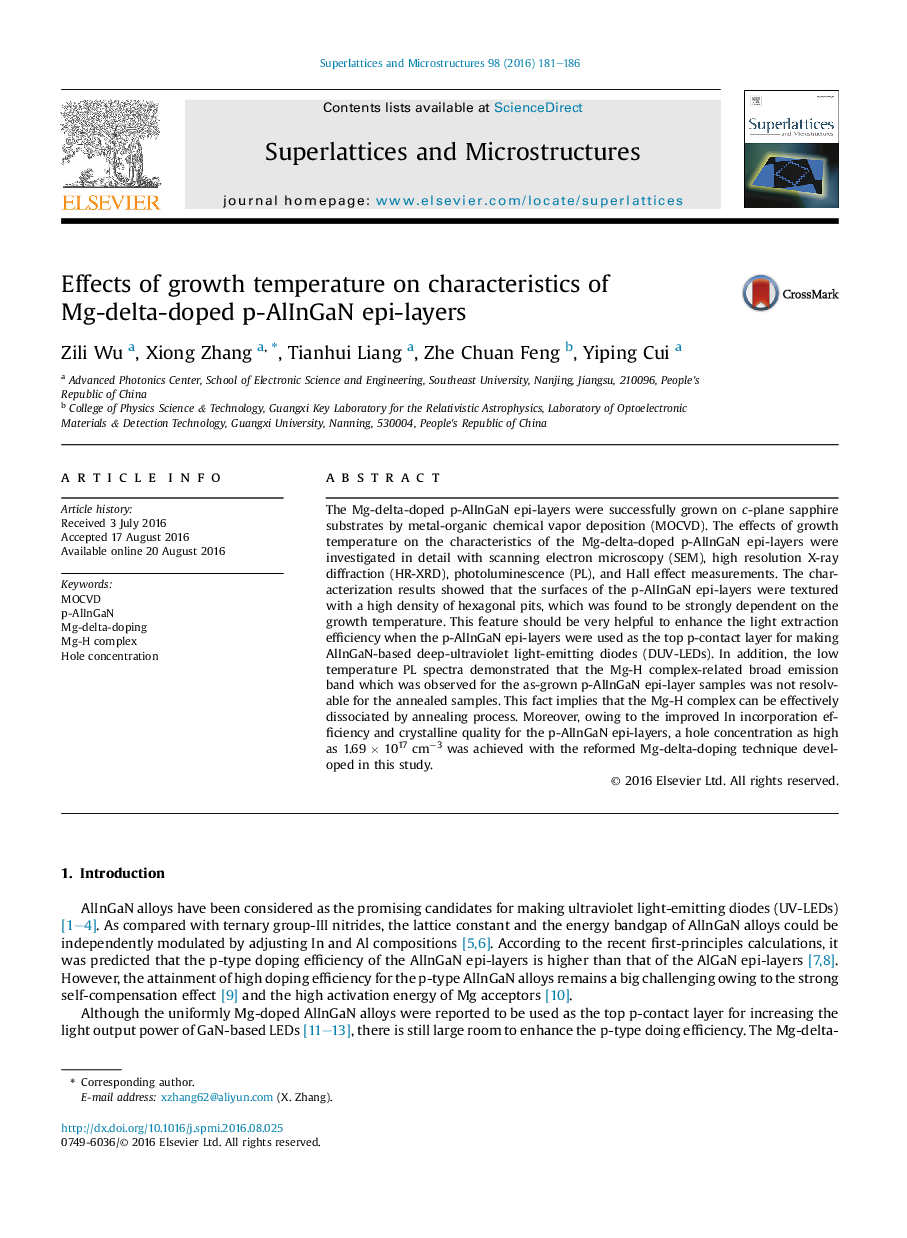| Article ID | Journal | Published Year | Pages | File Type |
|---|---|---|---|---|
| 1552464 | Superlattices and Microstructures | 2016 | 6 Pages |
•The Mg-delta-doped p-AlInGaN epi-layers were successfully grown.•A hole concentration as high as 1.69 × 1017 cm−3 was achieved.•The surface morphology was found to be dependent on the growth temperature.•The Mg-H complex could be effectively dissociated by annealing process.
The Mg-delta-doped p-AlInGaN epi-layers were successfully grown on c-plane sapphire substrates by metal-organic chemical vapor deposition (MOCVD). The effects of growth temperature on the characteristics of the Mg-delta-doped p-AlInGaN epi-layers were investigated in detail with scanning electron microscopy (SEM), high resolution X-ray diffraction (HR-XRD), photoluminescence (PL), and Hall effect measurements. The characterization results showed that the surfaces of the p-AlInGaN epi-layers were textured with a high density of hexagonal pits, which was found to be strongly dependent on the growth temperature. This feature should be very helpful to enhance the light extraction efficiency when the p-AlInGaN epi-layers were used as the top p-contact layer for making AlInGaN-based deep-ultraviolet light-emitting diodes (DUV-LEDs). In addition, the low temperature PL spectra demonstrated that the Mg-H complex-related broad emission band which was observed for the as-grown p-AlInGaN epi-layer samples was not resolvable for the annealed samples. This fact implies that the Mg-H complex can be effectively dissociated by annealing process. Moreover, owing to the improved In incorporation efficiency and crystalline quality for the p-AlInGaN epi-layers, a hole concentration as high as 1.69 × 1017 cm−3 was achieved with the reformed Mg-delta-doping technique developed in this study.
